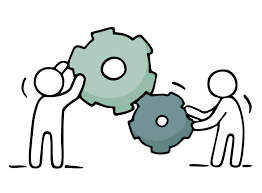Mastering Change: The Synergistic Roles of Emotional Intelligence and Agility
In the contemporary dynamic environment characterized by constant flux, adaptability transcends a mere desirable attribute; it constitutes an existential imperative. Change, as a fundamental constant, significantly influences individual and organizational success and well-being. This discourse examines the pivotal roles of emotional intelligence (EI) and emotional agility in not merely surviving but flourishing amidst continuous transformation. We will define key concepts and explore their application within real-world scenarios, drawing upon relevant psychological models and principles.
Emotional Intelligence (EI), as defined by Goleman, encompasses the capacity to perceive, understand, manage, and utilize emotions effectively. This multifaceted construct comprises self-awareness, self-regulation, motivation, empathy, and social skills. High EI facilitates the development of robust relationships, informed decision-making, and enhanced resilience in the face of adversity. Emotional Agility, building upon EI, refers to the ability to flexibly adapt emotional responses to challenging situations. This dynamic competence involves acknowledging, understanding, and transforming emotional experiences to foster personal growth and resilience. It involves mindful awareness and the intentional selection of responses rather than being dictated by immediate emotional reactions. This concept is closely linked to the work of Susan David, emphasizing the importance of self-compassion and embracing emotions without judgment.
Cultivating self-awareness – a cornerstone of EI – is paramount. Understanding one's emotional landscape, including strengths, weaknesses, triggers, and patterns, lays the foundation for effective self-regulation. This intimate self-knowledge is crucial for building meaningful connections and navigating interpersonal dynamics. This can be facilitated through techniques like journaling, mindfulness practices, and seeking feedback from trusted sources. The Johari Window model can be applied here to improve self-awareness by understanding the blind spots in one's self-perception.
Mindful emotional labeling during periods of change is critical. This transformative process shifts emotional reactivity towards informed decision-making. Instead of being overwhelmed by emotional surges, individuals gain clarity and perspective, enabling measured and effective responses. This aligns with the principles of Acceptance and Commitment Therapy (ACT), which emphasizes the importance of observing thoughts and feelings without judgment.
Empathy plays a crucial role during change. Understanding and validating the emotions of others fosters collaborative environments and strengthens relationships. During organizational restructuring, for example, acknowledging colleagues' anxieties fosters a supportive atmosphere, facilitating smoother transitions. This application reflects the principles of social exchange theory, highlighting the reciprocal nature of emotional support and collaboration.
EI significantly influences effective decision-making during periods of change. It necessitates a harmonious balance between rational analysis and emotional awareness. Integrating intuition with practical considerations leads to holistic choices aligned with both cognitive and emotional aspects. This approach aligns with the concept of bounded rationality, acknowledging the limitations of perfect information in decision-making processes and emphasizes the role of intuition and emotions in navigating complex situations.
Developing emotional agility requires consistent practice in adaptability and resilience. Embracing change as a catalyst for learning and growth, rather than a threat, cultivates a growth mindset, which is directly linked to resilience and the ability to adapt to changing circumstances. This approach aligns with the principles of positive psychology, which focuses on developing strengths and resources to overcome challenges.
Actively seeking feedback is instrumental in refining EI and navigating change. External perspectives provide valuable insights and areas for growth, enhancing adaptability. This aligns with the principles of 360-degree feedback, which provides a holistic view of an individual's performance and behavior from multiple perspectives.
Prioritizing self-care during change is crucial for maintaining emotional balance and resilience. Sufficient sleep, healthy nutrition, regular exercise, and mindfulness practices promote emotional regulation and enhance overall well-being. This aligns with the biopsychosocial model, which emphasizes the interconnectedness of biological, psychological, and social factors influencing health and well-being.
Conclusions and Recommendations: Mastering change is a continuous journey of learning and self-discovery. Cultivating EI and emotional agility equips individuals with the necessary tools to not only adapt to but thrive within dynamic environments. Organizations can foster this by implementing training programs focused on EI and emotional agility, promoting open communication, and creating supportive cultures. Further research should investigate the long-term impact of EI and emotional agility training on individual and organizational performance in various contexts, examining factors like organizational culture and leadership styles. The development of effective measurement tools for emotional agility remains a crucial area for future investigation, enabling more precise evaluation of interventions and their impact. The findings of such research can inform the design of more effective interventions and strategies for managing change, ultimately leading to improved individual and organizational outcomes.
Reader Pool: Considering the interconnectedness of emotional intelligence and emotional agility, how can organizations effectively integrate these concepts into leadership development programs to foster adaptability and resilience within their workforce?





No comments yet. Be the first to share your thoughts!